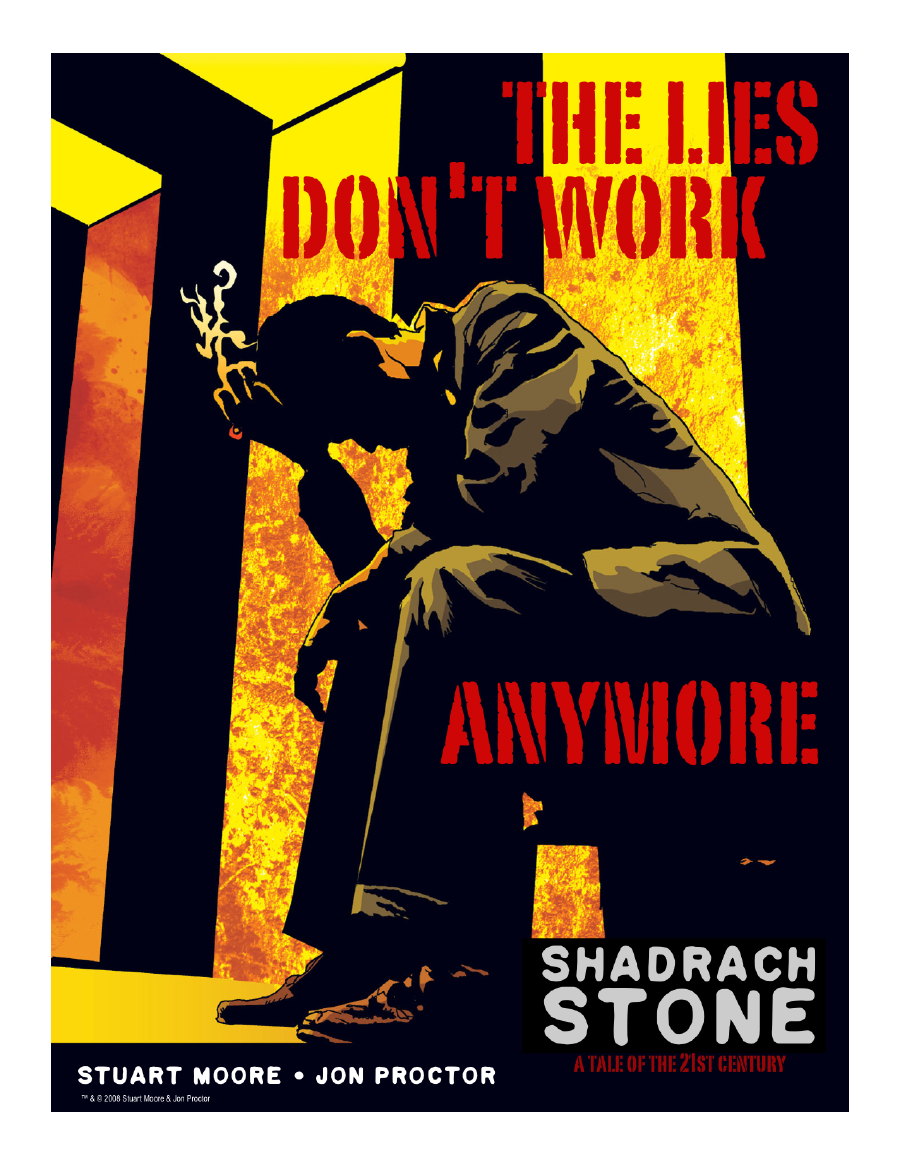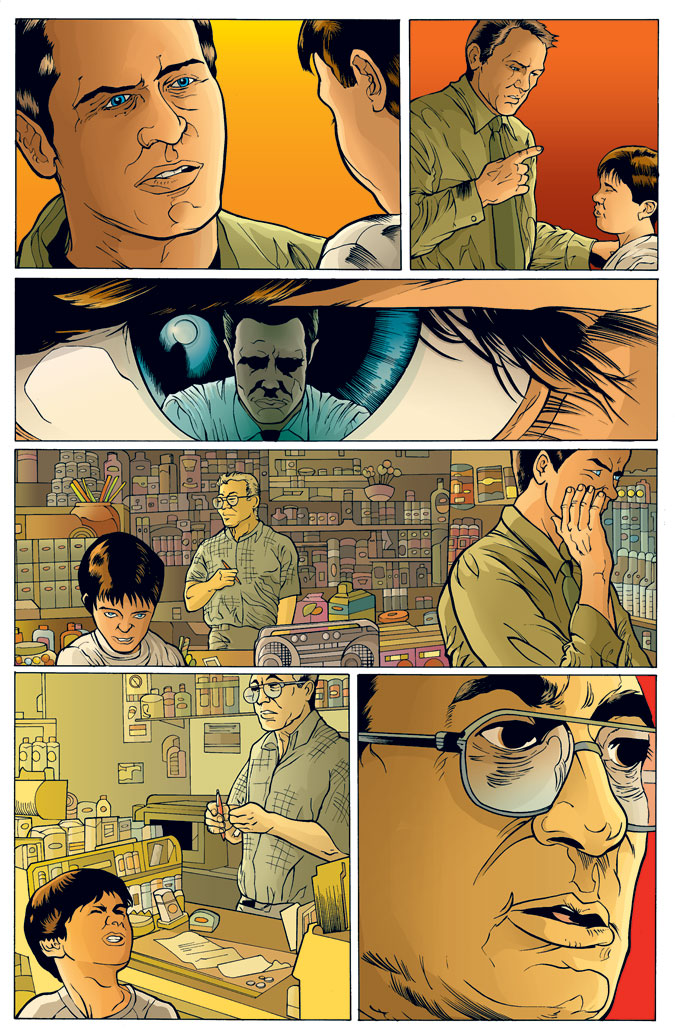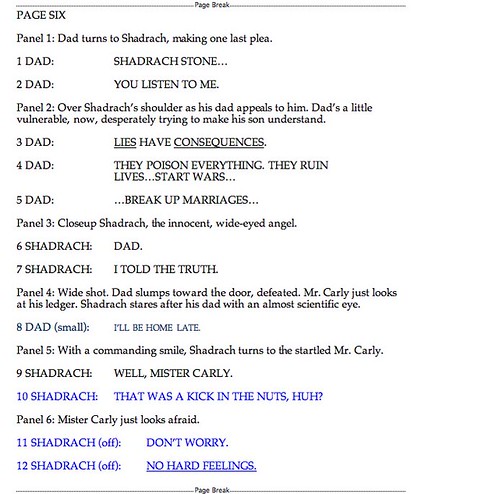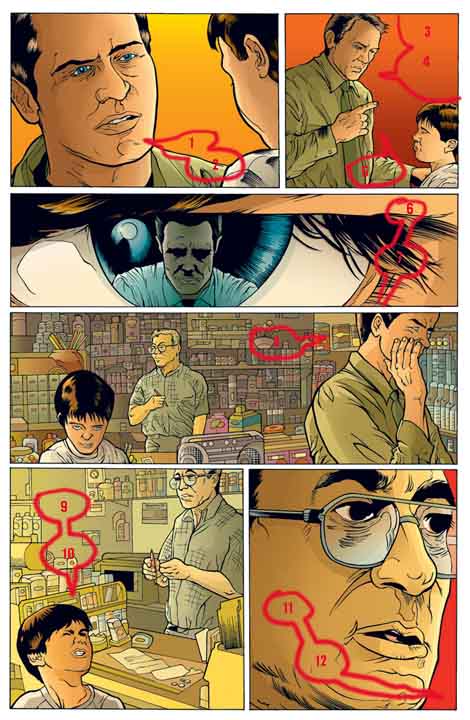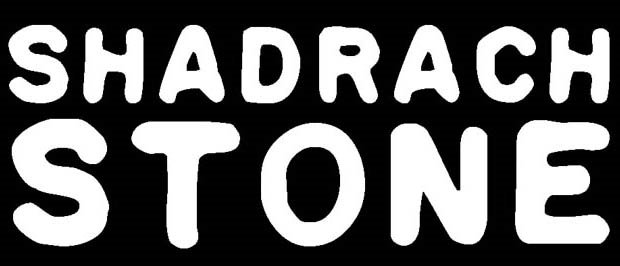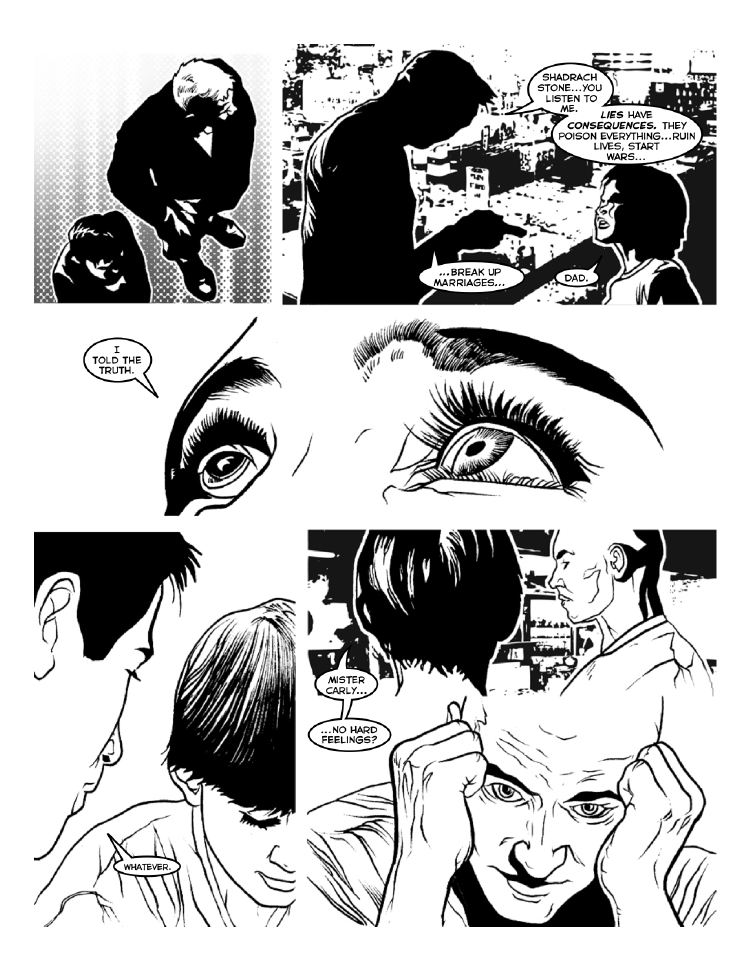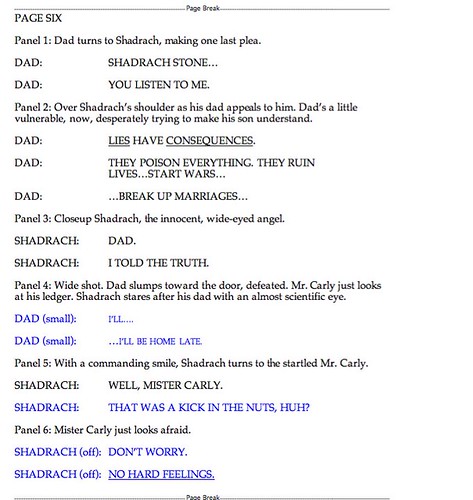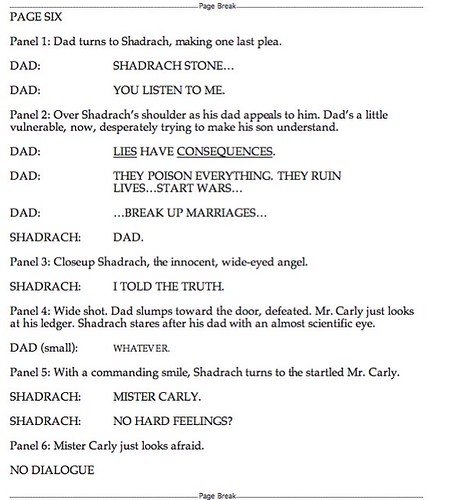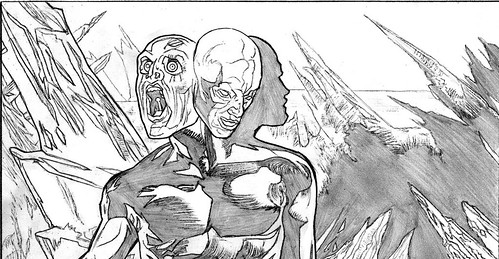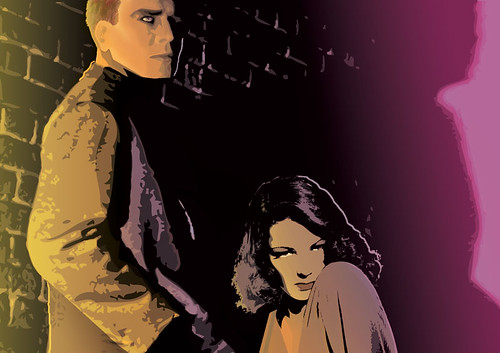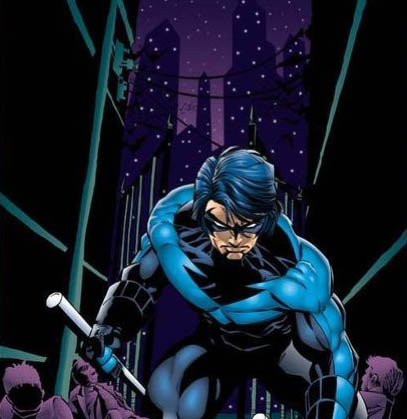
It’s an original graphic written and created by me, and pencilled, colored, and co-created by Jon Proctor. Inks are by Jeff Dabu, and the book features an introduction by Mike Carey. Publication date: September 2010. List price: $19.95.
SHADRACH STONE is a paranormal adventure story, a sociopolitical allegory, and an occasionally nasty character drama. But mostly, it’s about lies. The lies we tell ourselves to get through the day; the lies our leaders tell us so we’ll fall in line. The lies that become our accepted truths, and the ones that flare and turn to ash before the pure light of truth.
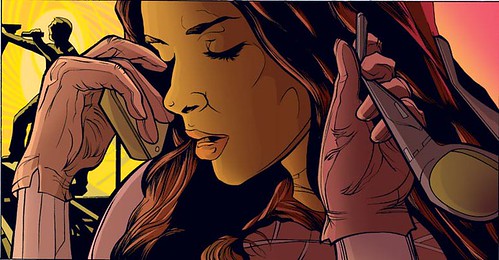
In the modern world, lies flourish in little dark corners. Just turn on your computer, or your radio, and watch or listen as thousands of pundits, bloggers, and paid shills craft little worlds before your eyes. These worlds aren’t real; often they’re in direct conflict with the reality. But as long as someone believes them -- as long as the tenets they’re based on aren’t challenged, within a reader’s or a listener’s mind -- they live, in a way.
Fortunately, it’s also become easier to debunk lies. The world is much smaller than it used to be. We get real-time video from Afghanistan, instantaneous reports from Somalia and Gaza and 178th Street in the Bronx. If you open your mind -- if you stop blindly trusting people with obvious agendas -- you can shake off the lies.

Shadrach Stone is a liar. As a Manhattan literary agent, he’s made a very good living at it. But he has no idea how special he is, how far-reaching the effects of his mendacity.
For good or ill, Shadrach is about to come face to face with the real world. Then, like all of us struggling to deal with the 21st century, he’ll have to change.
And so will the entire world.

As I write this, Jon Proctor is just finishing up the color art for SHADRACH -- but he and I have been working on this book for a long time. In this blog, I’ll post notes on the history and progress of the book, along with “process” entries on how a comic is made. Jon’s enthusiasm for this book means he’s thrown off dozens of sketches and full-color pieces over the course of our development period, so I’ve got plenty of cool stuff to show you. Jon will be posting, too, with his own brand of behind-the-scenes info.
I’ve been an editor and writer for Marvel Comics, DC, and several other companies. My new monthly title,
NAMOR: THE FIRST MUTANT, is about to debut from Marvel, and I’m very excited about that. But SHADRACH is all mine and Jon’s. That makes this book very special to us. Hopefully we’ll be able to show you why.
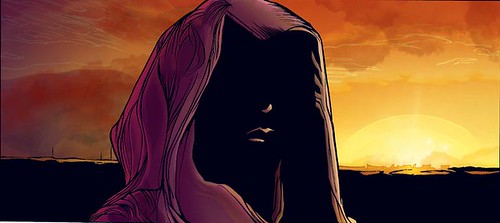
I’ll put out little alerts on Twitter and Facebook when I update here. I’m stuartmoore1 on both Facebook and Twitter, so sign up to follow or friend me now. I promise inside info, stupid jokes, and only a few, well-chosen lies.
Thanks for being with us. And remember:
